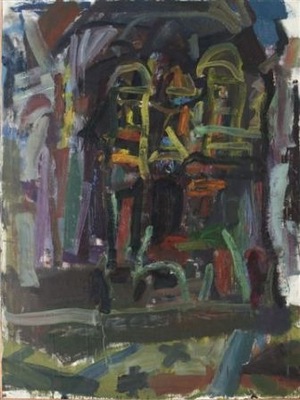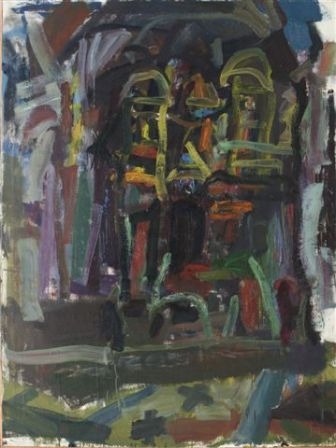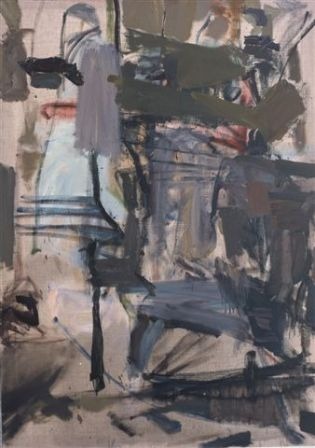IN MEMORIAM OF A.VAITKŪNAS. THREE PAINTINGS 0
Aušra Barzdukaitė-Vaitkūnienė
www.kamane.lt , 2007 11 03
“Interior in a Forlorn Garden”, canvas, oil, 195x135cm, 2000-2002
“St. George Church in Kaunas”, canvas, oil, 195x 145cm, 2000
“St. George Church in Kaunas”, canvas, oil, 198x 140 cm, 2002
(…) Three paintings were created in 2000-2002. “Interior in a Forlorn Garden” was created in Margionys. It is interesting and new that Arūnas painted such a large format in nature. The measurements of the painting are 195x135 cm. Arūnas was always concerned that the colour would not be formal or decorative in painting. He stressed that there exists a number of strange combinations of colours which you may not create while working in a studio. The painted motif may be found in the garden of our village.
Hops are rolling round old plum-tree stems, big thistles and nettles are thriving. The structure of the painting called the interior by Arūnas repeats the closed space of nature – a secret heathen temple. Rising vertical strokes, crossing with dark olive colour and lush green areas, some spaces of canvas not covered by paint remind of the old Lithuanian stories about gods living in forests and woods. The archetype memory of ancestors brings back believes of our nation.
“St. George Church” was painted in Kaunas in 2000 – 2002. The structure of the painting of dark and lush colours is similar to the painting “Interior in a Forlorn Garden”. The majestic and rigorous work testifies about the Christian tradition. These two works are similar by the colours and structure: “heathen” and “Christian” reveal the layers of believes of the Lithuanian nation. (…)
The third work “St. George Church in Kaunas” was created in the church in 2002. I remember how Arūnas used to drive there with a large canvas attached to the roof of the car.
The canvas of grey and almost monochrome colours and free painting reminds of the simplicity of first Christians. The space is formed by natural grey canvas not touched by paint similar to an ascetic clothing of a monk. Looking at the canvas, plainsong starts sounding in the ears, Christians gathered for prayers in catacombs appear in the imagination. Simple but real and august interior. The space of the church presented the information accumulated in centuries to Arūnas, who embodied it in the painting..
“Painting is a specific language. It is possible to render some information only by this language and no other,” this was what Arūnas noted in his notebook in 1993.
These three paintings repeat the development of religious history by their essence, they reveal the very deep layers of belief. The visual form, colour, line, space and stroke was important to Arūnas as a painter. However, two cultural traditions meet in these works – the philosophic-religious and aesthetic.



